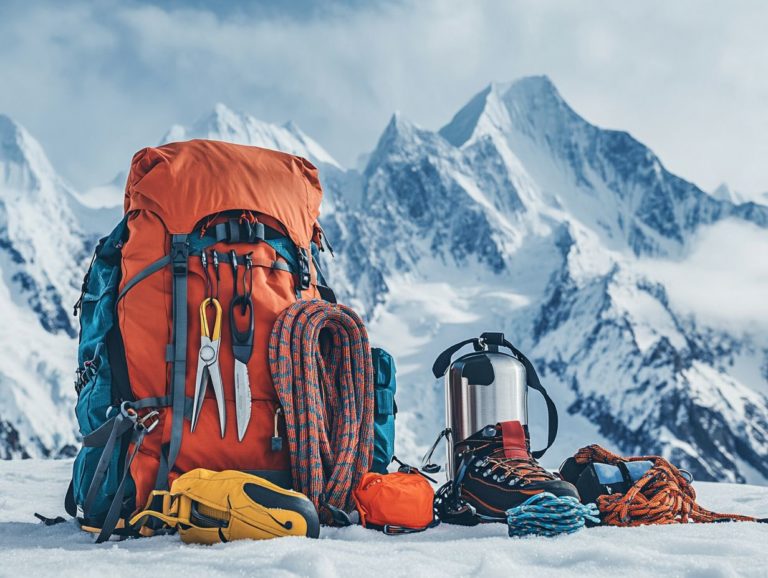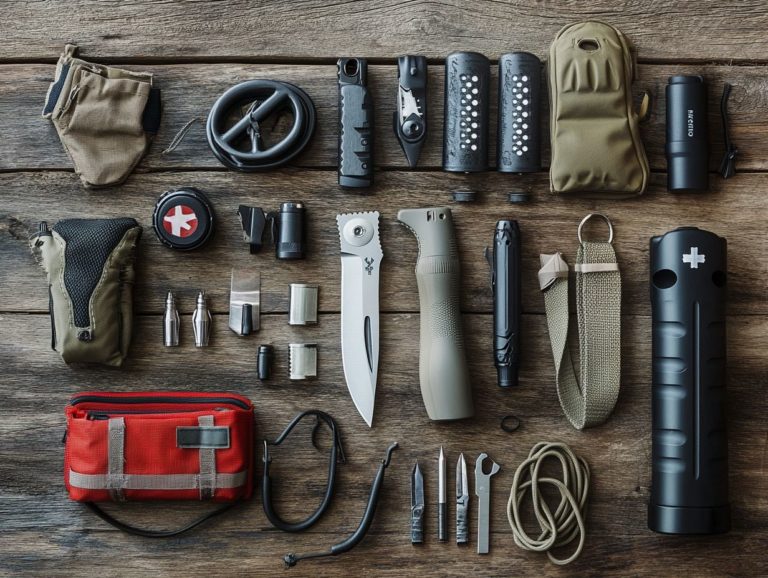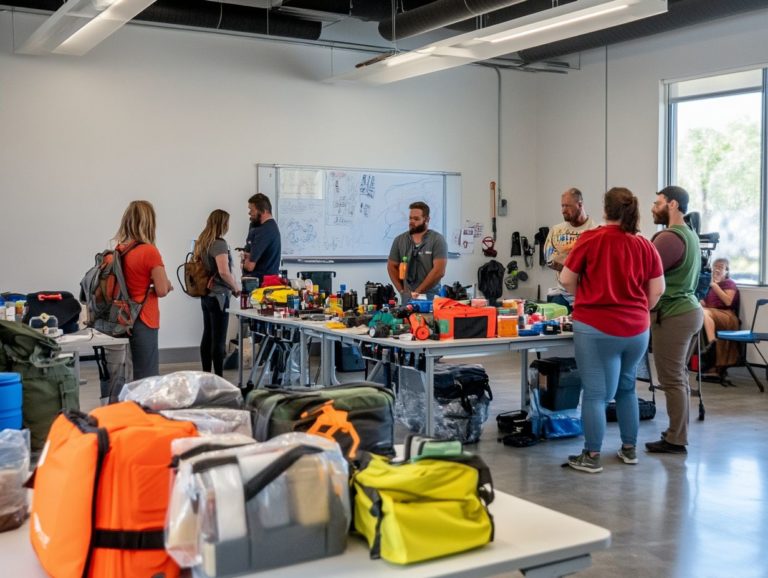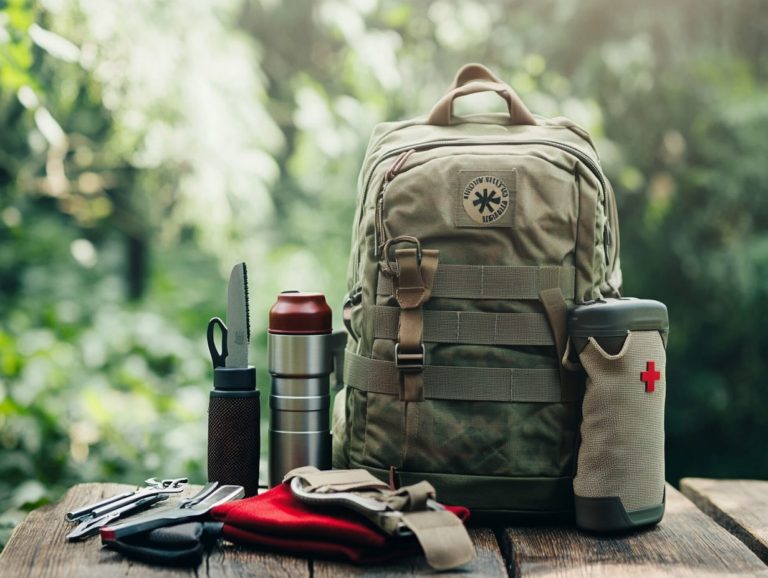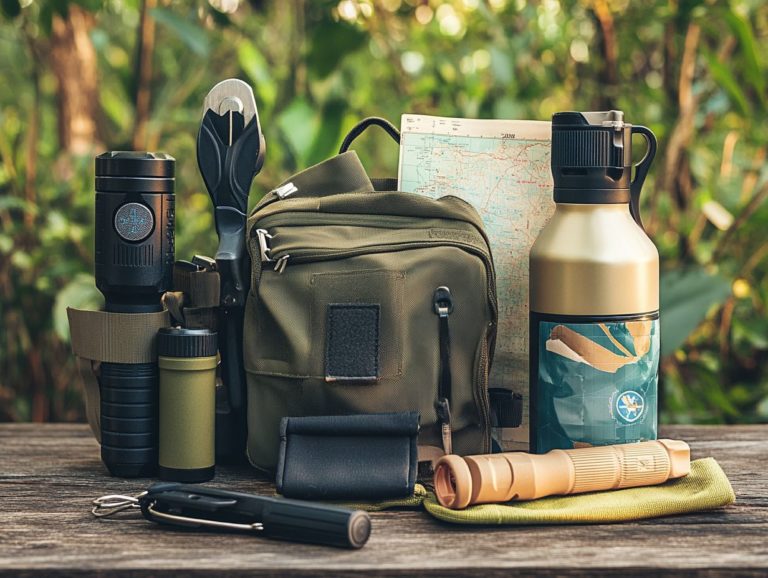Understanding Survival Gear Regulations
Navigating survival gear regulations can be a challenging task, but it is crucial for safety and compliance.
Let s explore these regulations and why they matter. Whether you’re a manufacturer, retailer, or outdoor enthusiast, knowing how to stay compliant is essential to avoid penalties.
We will provide you with resources to keep you updated on this important topic. Dive in and discover more!
Contents
- Key Takeaways:
- Overview of Survival Gear Regulations
- Why are Survival Gear Regulations Important?
- Types of Survival Gear Regulations
- How to Stay Compliant with Survival Gear Regulations
- Consequences of Non-Compliance
- Why Complying with Survival Gear Regulations is Essential
- Resources for Staying Up-to-Date on Survival Gear Regulations
- Frequently Asked Questions
- What are survival gear regulations?
- Why is it important to understand survival gear regulations?
- What types of gear are typically regulated?
- Who is responsible for enforcing survival gear regulations?
- Are there any exceptions to survival gear regulations?
- How can I stay updated on changes to survival gear regulations?
Key Takeaways:
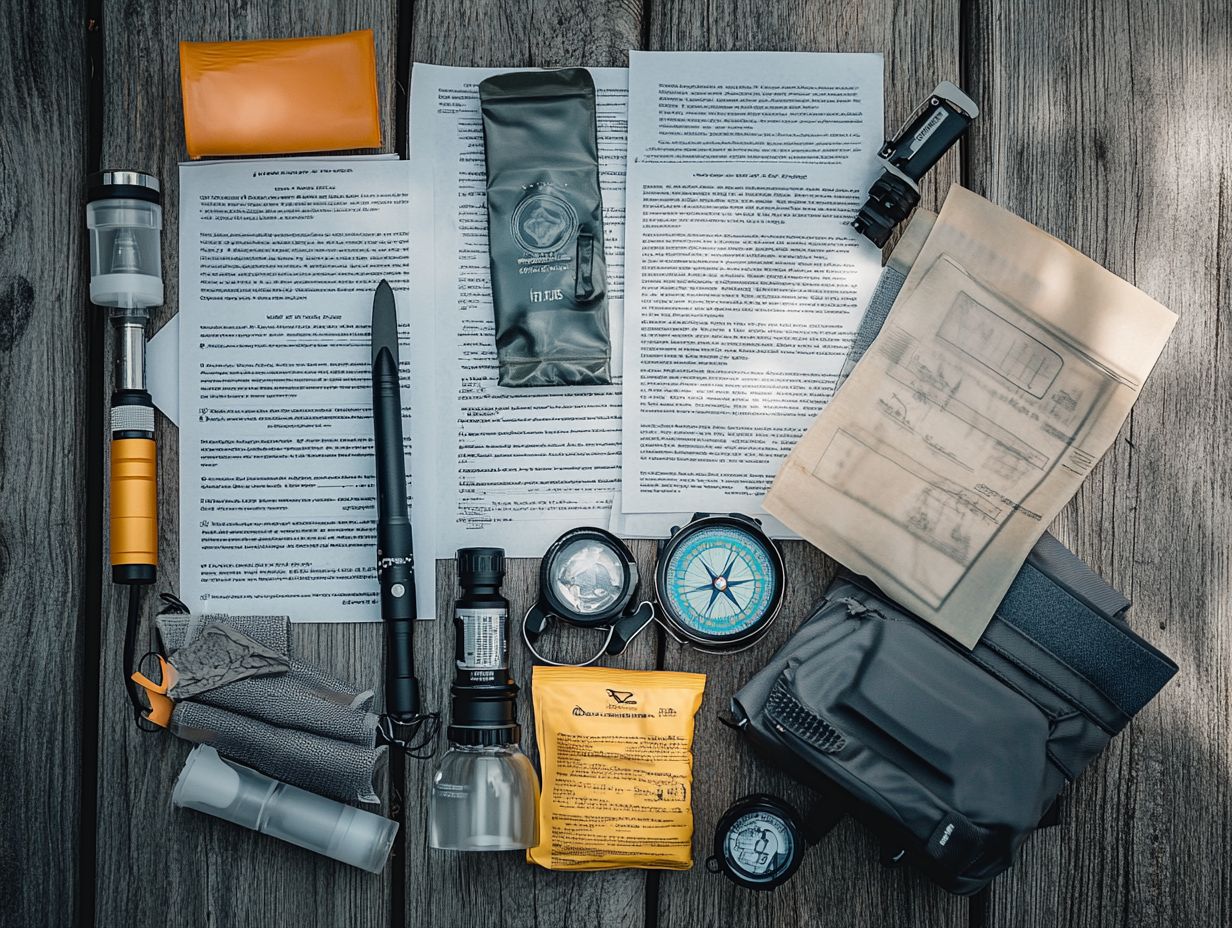
- Survival gear regulations ensure safety and compliance in the production and use of survival gear.
- Staying compliant is crucial for individual safety and the success of the industry. This means understanding and following the rules set by authorities.
- Ignoring these regulations can lead to penalties. Stay informed by consulting reliable resources like government websites.
Overview of Survival Gear Regulations
Survival gear regulations are crucial guidelines for using and maintaining emergency equipment, such as survival kits, first aid kits, and signaling devices.
These rules cover the types of equipment needed and the safety measures pilots must follow. Understanding these regulations enhances safety during unexpected emergencies.
What are Survival Gear Regulations?
Survival gear regulations are rules that dictate how emergency equipment should be managed in aviation contexts.
They ensure that pilots and passengers have access to essential tools in emergencies. This includes items like personal flotation devices and first aid kits, each for specific situations.
These regulations specify minimum inventory requirements to ensure every aircraft is equipped. Following these rules is vital for safety in emergencies.
Why are Survival Gear Regulations Important?
Survival gear regulations are vital as they establish safety measures in aircraft operations, where emergencies can happen.
Without these regulations, pilots and crew might lack guidance on using survival equipment, like life preservers and emergency beacons.
This gap in knowledge can lead to serious problems in real emergencies, highlighting the need to follow these standards.
Ensuring Safety and Compliance
Staying safe and compliant with survival gear regulations is key for effective emergency communication and survival techniques.
This requires thorough training for pilots to operate survival gear under pressure. Regular maintenance of gear is essential to prevent failures that could lead to serious issues.
By following established aviation standards, you enhance safety and build a culture of vigilance.
Incorporating drills and assessments is important, ensuring staff stay skilled in both technical abilities and emergency protocols.
Types of Survival Gear Regulations
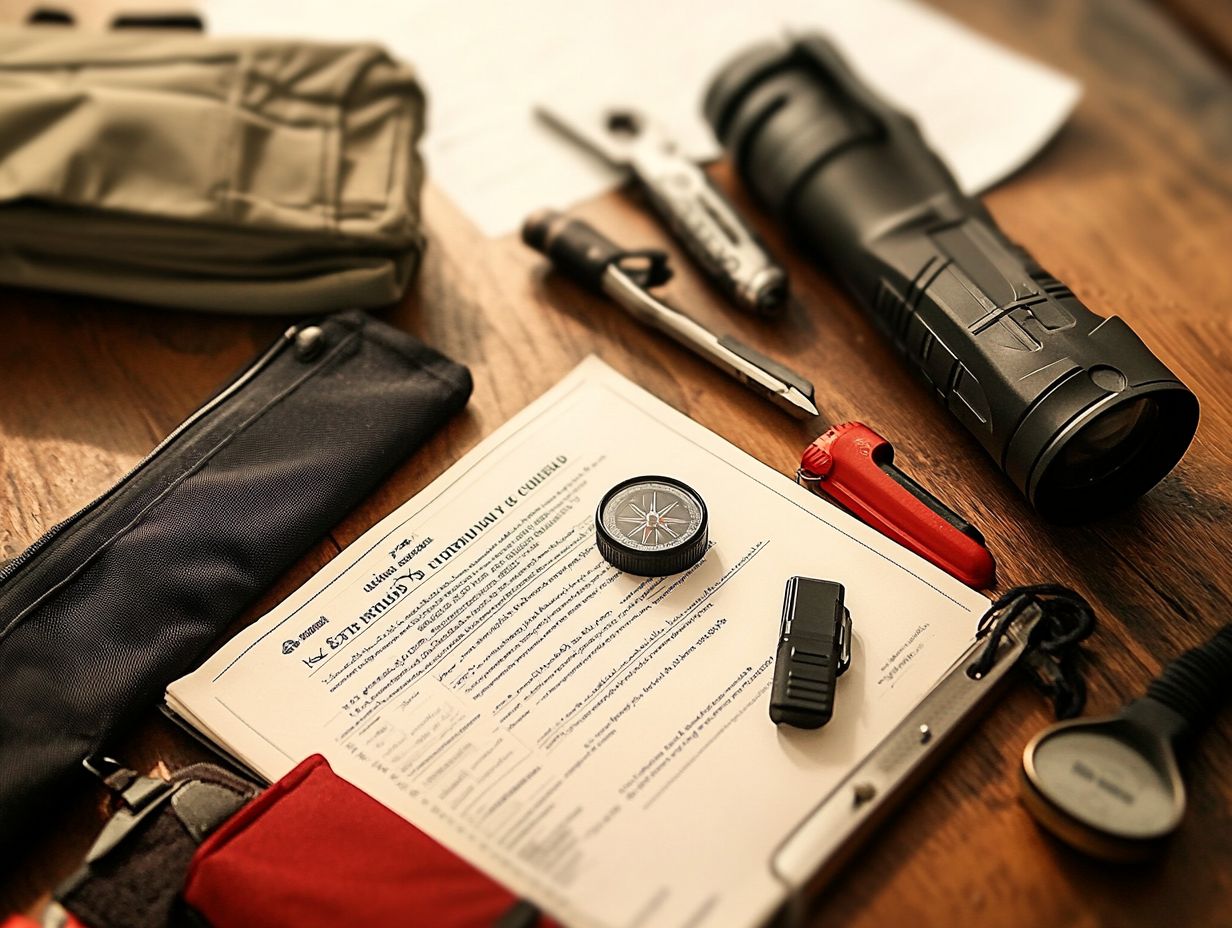
Survival gear regulations can typically be divided into two primary categories: government regulations and industry standards. Both elements are crucial for ensuring the safety and reliability of essential survival equipment, such as life rafts and first aid kits.
Understanding these classifications helps you make informed choices about the gear you select.
Government Regulations
Government regulations concerning survival gear are typically found within aviation regulations. These guidelines include the National Search and Rescue Plan, which ensures that emergency equipment is available and properly maintained.
These regulations arise from a historical need for better safety due to incidents that highlighted the critical importance of having accessible survival equipment. The Federal Aviation Administration (FAA) and international bodies like the International Civil Aviation Organization (ICAO) require operators to equip their aircraft with essential gear, including life vests and survival kits.
Complying with these rules not only safeguards the lives of passengers and crew but also enhances the effectiveness of rescue operations during emergencies. Adhering to these regulations is essential for the aviation industry, reflecting a commitment to safety and preparedness.
Industry Standards
Industry standards for survival gear establish quality, maintenance requirements, and usability for crucial survival equipment. This ensures you and your crew have dependable tools during emergencies.
These standards serve as a benchmark for manufacturers, guiding them to design equipment that often surpasses government regulations. By aligning with established guidelines, they create a framework that enhances safety and reliability.
For example, when you evaluate life rafts or emergency beacons, adhering to industry standards guarantees that such equipment undergoes rigorous testing. This ultimately instills confidence among aviation professionals like you.
Industry standards promote a shared understanding among operators and regulatory bodies. This fosters a cohesive safety culture that prioritizes efficient emergency responses and enhances the integrity of aviation operations.
How to Stay Compliant with Survival Gear Regulations
To remain compliant with survival gear regulations, cultivate a comprehensive understanding of the relevant guidelines while implementing proper equipment care. Engaging with training materials that address emergency procedures and safety measures is equally important.
This approach ensures your gear is in optimal condition and prepares you for any situation that may arise.
Understanding and Following Regulations
Understanding and adhering to survival gear regulations is vital for aviation personnel. It directly influences your ability to respond effectively in emergency situations. Staying informed about these regulations goes beyond mere compliance; it s about safeguarding the well-being of both crew and passengers.
Continuous education and training are paramount, enabling you to familiarize yourself with the latest safety protocols and operational procedures. By utilizing survival manuals and various educational resources, you can significantly enhance your knowledge.
Participating in workshops and simulations refines your skills, ensuring you are well-prepared to tackle any challenges during flight. This ongoing dedication to learning helps instill safety into the culture of aviation.
Consequences of Non-Compliance
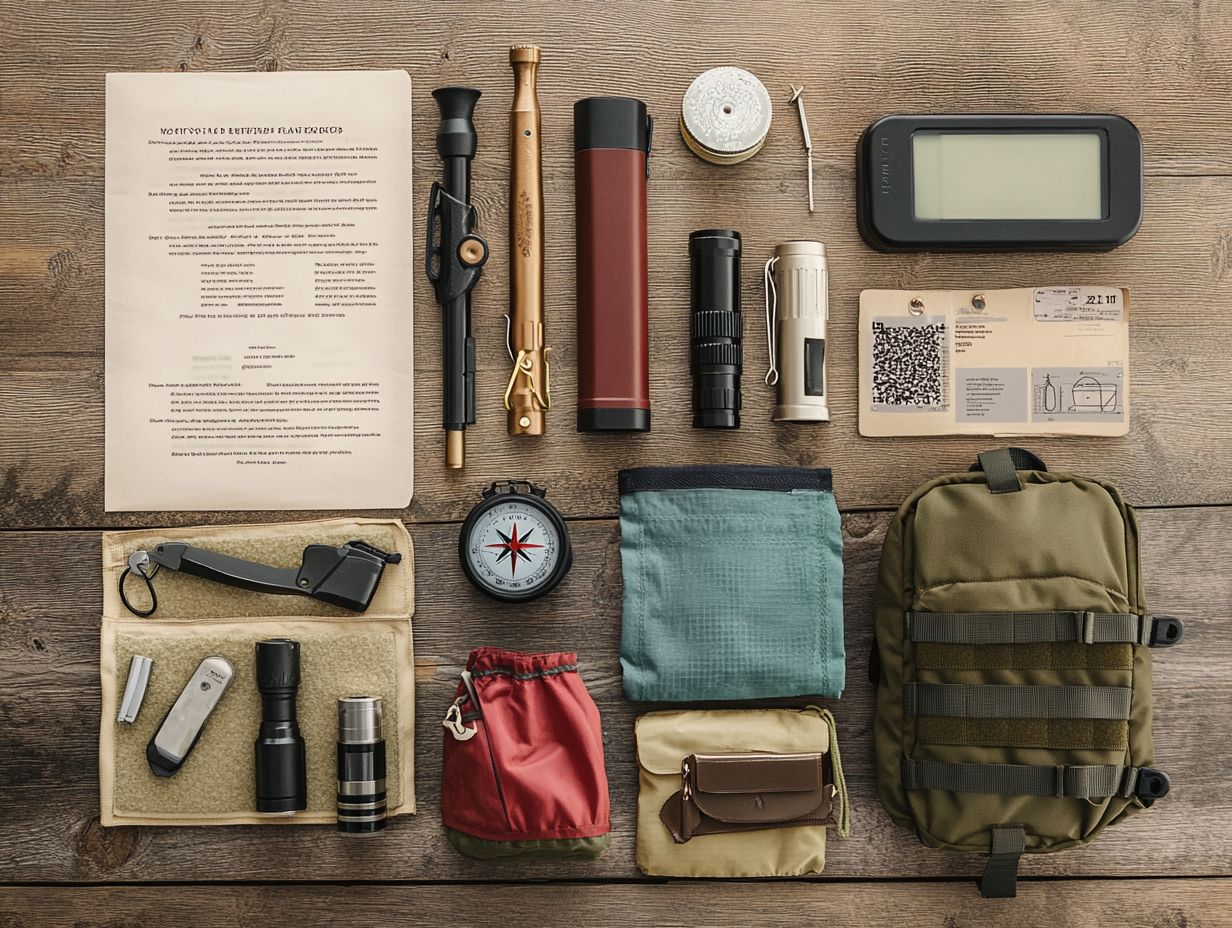
The consequences of not adhering to survival gear regulations can be serious. You might face potential penalties from regulatory authorities. More importantly, there are heightened risks during emergencies that could endanger lives and compromise aircraft safety.
Make compliance your top priority to protect yourself and those around you.
Additionally, take the time to review your survival gear and ensure it meets all regulations!
Why Complying with Survival Gear Regulations is Essential
Potential penalties for not following survival gear regulations can include hefty fines, loss of certification, and increased scrutiny during inspections. These risks can put lives at stake if the proper gear is unavailable during a crisis.
In industries like maritime and aviation, failing to adhere to these rules may lead to serious consequences such as suspension of operations and potential legal liabilities. The implications go far beyond financial loss; individual lives depend on the right equipment being available in emergencies.
Neglecting these standards risks delays in emergency response times, endangering your organization s reputation and the well-being of those who rely on your preparedness. Ensuring compliance equips your responders with necessary tools, significantly reducing the potential for serious problems in urgent situations.
Resources for Staying Up-to-Date on Survival Gear Regulations
To stay informed about survival gear regulations, aviation professionals should utilize various resources, such as specialized websites, training materials, and reputable industry organizations. These provide the latest insights on following the rules and safety measures.
Embracing these tools will ensure you always have the most current information for maintaining safety and adherence to regulations. Explore these resources today to ensure your safety!
Websites and Organizations to Consult
You ll find a wealth of valuable information on survival gear regulations from several reputable websites and organizations, including the FAA, NTSB, and specialized aviation safety groups. These entities are crucial in establishing guidelines that prioritize individual safety and ensure the products you choose comply with necessary standards.
For example, the FAA outlines specific requirements for survival gear on aircraft. The NTSB investigates accidents to enhance safety protocols. Many enthusiast groups and forums dedicated to survival skills also provide insights and experiences regarding the effectiveness and legality of different gear.
By leveraging these resources, you can deepen your understanding of the regulations governing your survival gear choices, ultimately enhancing your preparation and safety.
Frequently Asked Questions
What are survival gear regulations?
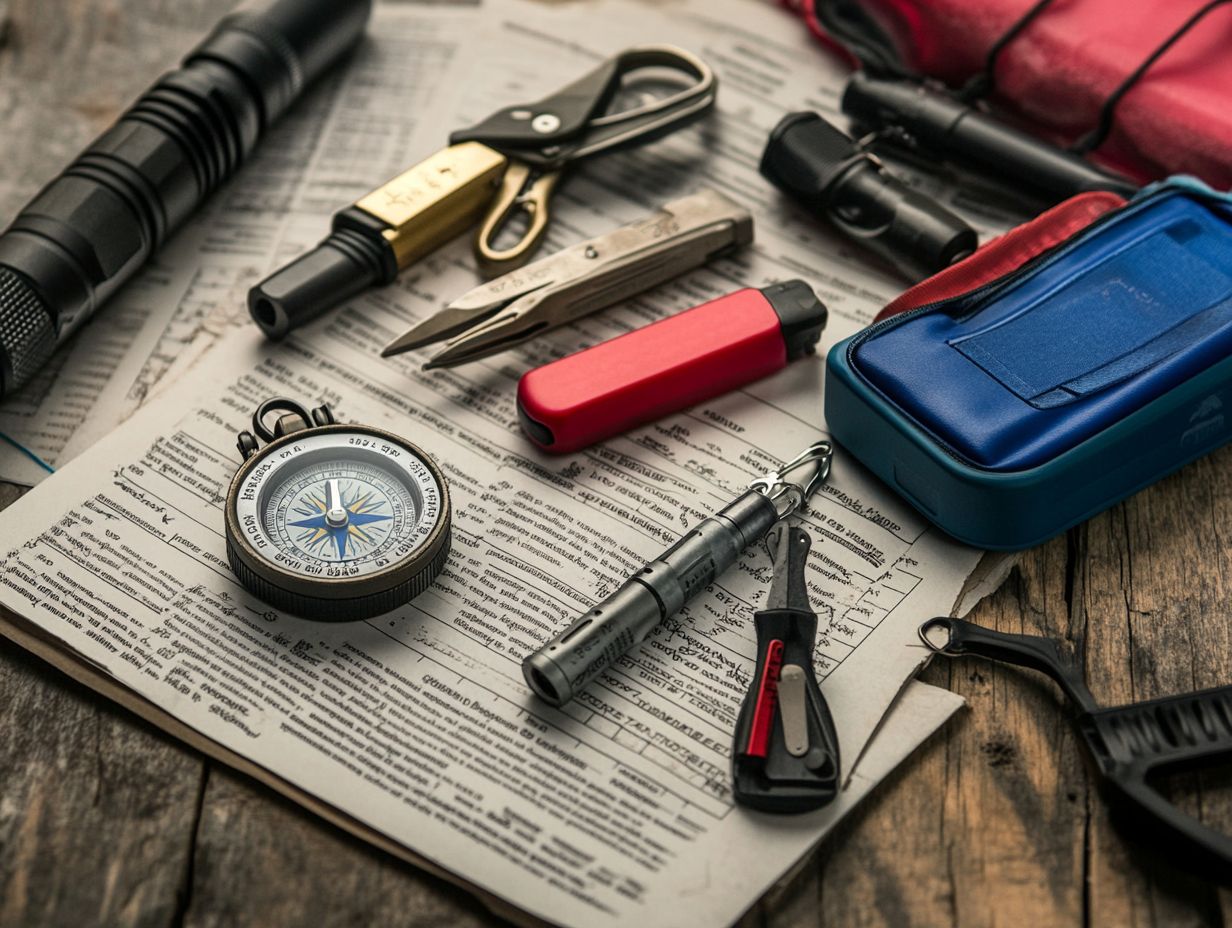
Survival gear regulations are specific laws about survival equipment needed in emergencies.
Why is it important to understand survival gear regulations?
Understanding survival gear regulations is essential for ensuring safety and following the law. Ignoring these rules can lead to fines, confiscation of gear, and even legal consequences.
What types of gear are typically regulated?
Survival gear regulations can cover a wide range of equipment, including but not limited to: first aid kits, emergency signaling devices, fire starters, knives and other cutting tools, water purification systems, and shelter-building materials.
Who is responsible for enforcing survival gear regulations?
The enforcement of survival gear regulations varies by location, but it is usually the responsibility of law enforcement agencies or park rangers. Private property owners may also have their own regulations for survival gear.
Are there any exceptions to survival gear regulations?
Some exceptions may exist for specific groups or purposes, such as military personnel or disaster relief organizations. However, it is essential to research and follow any special regulations or permits required.
How can I stay updated on changes to survival gear regulations?
Survival gear regulations may change over time, so regularly check with relevant government or regulatory agencies for updates. Staying informed through outdoor and emergency preparedness organizations and forums is also beneficial.

